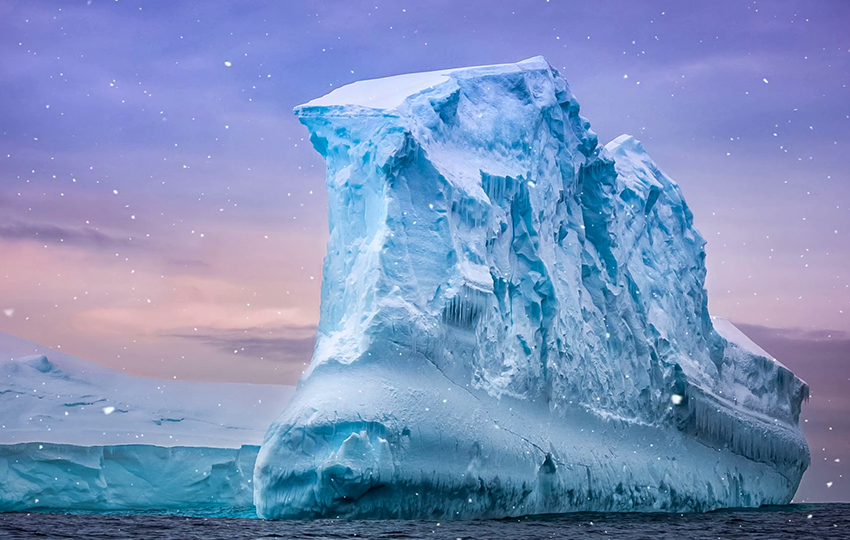What is it about?
Globally, glaciers and the large ice sheets of Antarctica and Greenland are particularly vulnerable to climate change, risking a significant future contribution to changes in sea levels. At present, there are significant uncertainties, e.g. relating to their stability, which prevent an accurate assessment of their vulnerability. The ‘Arctic amplification’ of global warming is putting pressure on the ecosystems and communities of the region and having an impact at global level as well. The Arctic’s fragile natural ecosystems and societies are under serious threat, and additional human activities, linked to the new economic opportunities that are made possible by climate change, are putting additional pressure on them.
Scope:
Actions should aim at developing innovative approaches to address only one of the following sub-topics:
- Sea-level changes (Research and Innovation action): Actions should assess the processes controlling changes to global ice mass balance – including ice dynamics – such as ice shelf-ocean and sea-ice interactions, surface components, effects of crustal de-loading (Glacial Isostatic Adjustments) on relative sea-level changes and/or gravitational effects of ice mass changes on the spatial patterns of sea-level changes. Actions should assess the status of ice sheets and glaciers, report on how their changes are likely to affect future sea-levels, and increase confidence in predicting changes in the cryosphere including through better representation of poorly represented processes. Actions should also analyse low-probability high-impact scenarios including those associated with the collapse of ice sheets (sea-level fingerprints). Actions may be focused on specific issues which substantially contribute to sea-level changes and to the assessment of the associated major risks to and impacts on coastal communities, coastal ecosystems and critical infrastructure across the globe.
- Changes in Arctic biodiversity (Research and Innovation action): Actions should identify and analyse major drivers and implications of changing biodiversity in the Arctic, such as the role of invasive species, and how vulnerable land and/or marine ecosystems are with respect to combined human and natural influences. Actions should assess the ecosystems’ responses to both external and internal factors and how these responses are impacting on indigenous populations and local communities at socio-economic level. Actions should also identify adaptation strategies in relation to the changes in Arctic ecosystems.
- Sustainable opportunities in the changing Arctic (Research and Innovation action): Actions should assess the viability of new economic activities – such as resource exploitation, shipping and tourism – and their ecological and socio-economic impacts and feedbacks at various scales, and their impact on the provision of ecosystem services. Actions should investigate key processes with high societal and economic impacts and provide appropriate, solution-oriented adaptation and mitigation responses, as well as capacity building for sustainable livelihoods while considering – in a co-design approach – the needs, priorities, and perspectives of indigenous populations, local communities and economic actors operating in the region.
- Arctic standards (Coordination and Support action): The action should propose guidelines and protocols to develop ‘Arctic standards’, also including the legal framework, based on the translation of research outcomes into cold-climate technologies and services with commercial potential and the assessment of the sustainability of associated processes and technologies. The action should cover a wide range of technologies and services that have the potential to bring broad social and economic benefits within and beyond the Arctic region. The action should also provide requirements on how to design, build, install, and operate equipment and services to safely perform activities in the Arctic and to respond to emergencies.
Expected Impact:
- For projects addressing parts a), b) or c), the project results are expected to contribute to:
- the implementation of the new integrated EU policy for the Arctic[3];
- the IPCC assessments and other major regional and global initiatives;
- enhanced engagement of and the interaction with residents from local communities and indigenous societies.
- For projects addressing part d), the project results are expected to contribute to:
- enhanced stakeholder capability to operate in cold climate environments;
- better servicing of the economic sectors that operate in the Arctic (e.g. shipping, tourism);
- promoting sustainable Arctic opportunities arising from climate change and supporting the leverage of regional (EU) funds into these opportunities;
- supporting the competitiveness of European industry, particularly SMEs, engaging in sustainable development of the Arctic.
Deadline: 19 February 2019
2nd stage Deadline (RIA Research and Innovation action: 04 September 2019
Available call budget in EUR:
- 2,000,000 (CSA Coordination and support action)
- 39,000,000 (RIA Research and Innovation action)
In the same framework, iED has already implemented several innovative projects which included innovative practices. If you are interested in applying for this call you could contact us and further discuss the available options.

